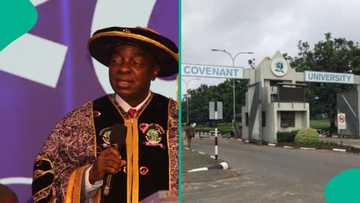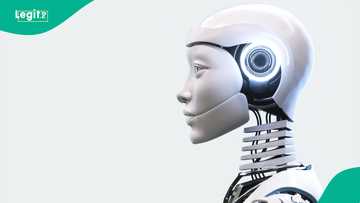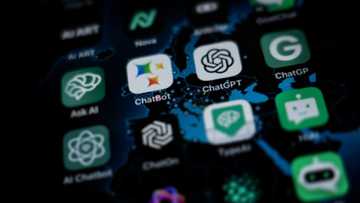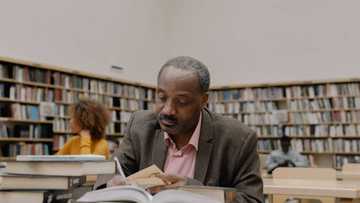Types of teaching methods, their advantages and disadvantages
One of the most important things an educator should determine is the teaching approach to apply in class. This is because the techniques have a great impact on learners. Educators can also combine multiple teaching methods for students to grasp the information. This article explores the benefits and drawbacks of different types of teaching methods for educators.
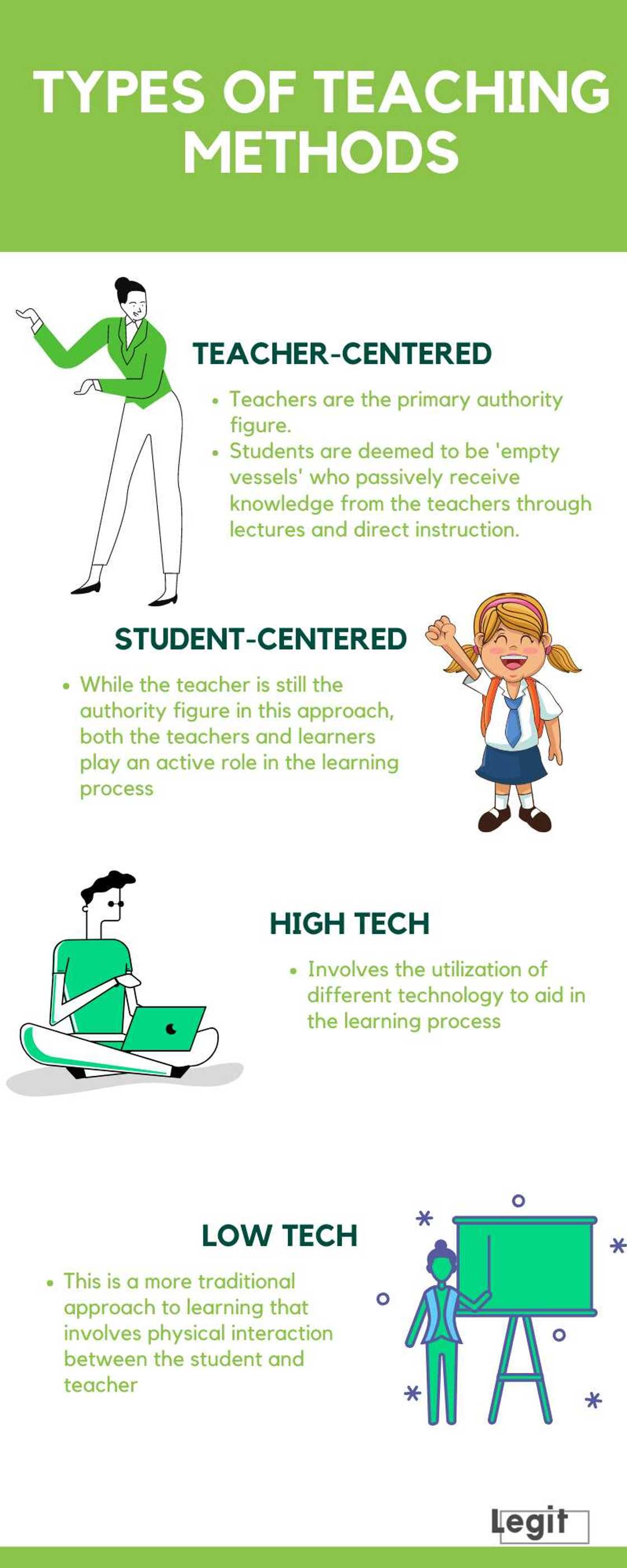
Source: Original
TABLE OF CONTENTS
- Key takeaways
- What are the different types of teaching methods, their advantages and limitations?
- 1. Teacher-centered teaching methods
- 2. Student-centered teaching methods
- a. Differentiated instruction
- b. Inquiry-based learning
- c. Expeditionary learning
- d. Personalized learning
- e. Game-based learning
- f. Project-Based Learning method
- g. Problem-based learning method
- h. Group or cooperative learning method
- i. Montessori learning method
- Advantages of learner-centered teaching methods
- Disadvantages of student-centered teaching methods
- 3. High-tech learning method
- 4. Low-tech learning method
- 5. Case study learning method
- What is the definition of a teaching method?
- What are the three types of teaching methods, their advantages and disadvantages?
- What are the 4 methods of teaching?
- What are the 5 methods of teaching?
- What are the 10 methods of teaching?
- What are the 15 methods of teaching with examples?
- What is blended learning?
- What is a universal design for learning?
- What are the new methods of teaching?
- What are the general methods of teaching?
- What determines the methods of teaching in education?
- Where can you get the advantages and disadvantages of teaching methods in PDFs?
Key takeaways
- A facilitator can pass information to pupils in numerous ways.
- Your students can achieve excellent exam performance if your teaching style is enjoyable.
- Combining teaching methods makes lessons unique and intriguing.
- If they don't understand a concept, try other teaching methods to make it easier for them to understand and remember it.
What are the different types of teaching methods, their advantages and limitations?
These methods are not mutually exclusive and can be used in combination to create a dynamic and effective learning environment. Once a teacher understands the needs of their students, they can choose the most effective teaching methods to use.
Discover the advantages and disadvantages of teaching methods that are commonly used across the globe:
1. Teacher-centered teaching methods
In this teaching methodology, the teachers serve as an authority for their students. On the other hand, students tend to receive their knowledge passively by listening to lectures and the teacher's directions. Here are examples of types of teacher-centered teaching methods.
a. Lecture-based or direct instruction
This teaching strategy involves making lesson plans for learners and sharing knowledge through lectures, presentations, and demonstrations.
How to implement lecture-based teaching
This teaching method does not factor in student preferences or opportunities for other types of learning. Here is how to apply lecture-based teaching:
- Find out what your students know about the topic by asking questions.
- Introduce a new topic with a story or a review of a related topic you covered before.
- Use examples from your students' experiences or things they can relate to.
- Use visual cues, such as icons, images, and videos, in presentations to keep your students interested in the content.
- Allow time for questions during and after the lecture to allow students to easily engage with the concept and remember it.
- Please encourage students to stay attentive during lectures and handwrite notes. It can also help them recall information better.
- Ensure your conclusion or summary has the key points.
- Keep lessons brief to maintain student attention and engagement.
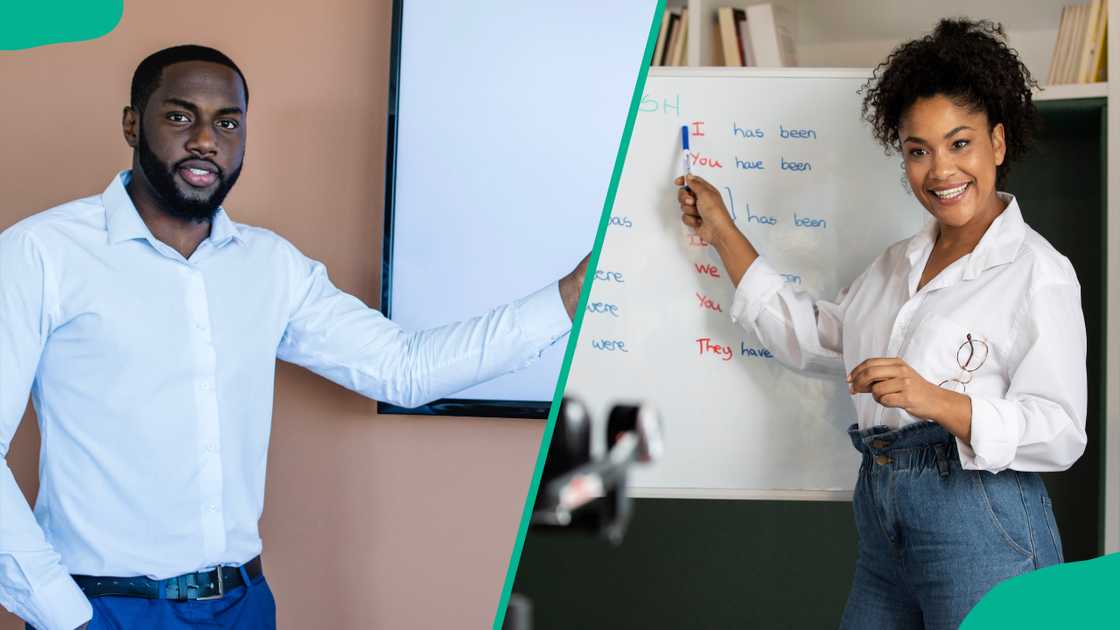
Source: UGC
b. Flipped classrooms
This approach involves students watching or listening to pre-recorded lessons (videos/audio) at home and completing assignments.
How to implement flipped teaching
- Break lessons into segments of about 7-10 minutes to allow students to digest every part of the lesson.
- Use visuals, animations, and images for students to see and connect with their lesson.
- Create questions for students to answer during or after the lesson. You can also create a task for them to do.
- Please encourage students to watch lectures or instructional videos at home to let them work at their own pace.
- Test their knowledge with questions and self-assessment.
c. Kinesthetic learning
This approach is widely known as tactile learning. Students learn by watching simulations, presentations, or moving around in a hands-on environment.
How to implement kinesthetic teaching
The kinesthetic teaching methodology becomes teacher-centered when they can choose how to learn from their environment. Here is how you can apply this learning method:

Read also
Japa: 7 documents Nigerian students must have before applying for scholarship in Canada in 2025
- Allow students to stand or move while learning.
- Give them frequent short breaks.
- Teach them using real-life objects like costumes and arts & crafts.
- Use animation in your teaching, e.g., singing and dancing.
- Use science experiments when teaching.
Advantages of teacher-centered teaching methods
Teacher-centered methods of instruction have the following benefits:
- The classroom remains orderly because the teacher has better control over the students and classroom activities.
- Teachers worry less about students missing an important topic because they direct all classroom activities.
- A teacher can develop cooperation among the students by giving them group assignments.
- Students focus better on the subject when they get short lectures or breaks within lessons.
- It is inexpensive because lectures are done in a central place (classrooms).
- Teaching can be done remotely by letting students watch or listen to pre-recorded lessons (videos/audio) at home.
Disadvantages of teacher-centered teaching methods
Teacher-centered methods of instruction have the following weaknesses:
- Students may entirely depend on teachers.
- Lecture-based teaching makes students work alone. Hence, they may not learn how to collaborate and communicate with each other.
- Teacher-centered instruction may not allow students to express themselves, ask questions, and control their learning pace.

Read also
FULL LIST: 10 key things parents need to put in place for their children before school starts
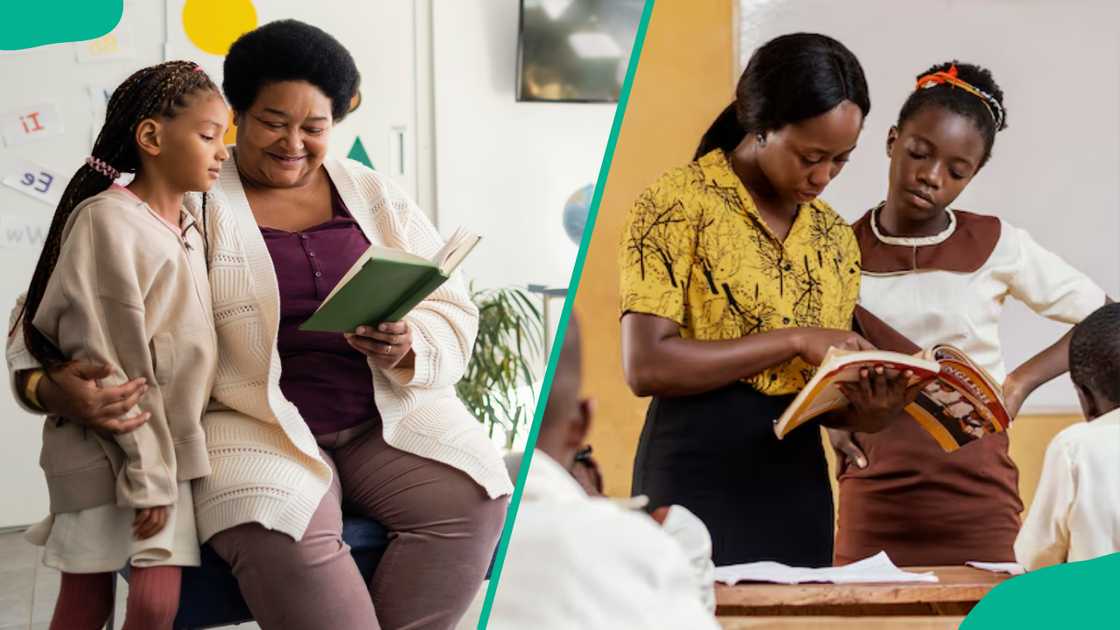
Source: UGC
2. Student-centered teaching methods
In these teaching methods, teachers and learners become a part of the process more or less equally. The teacher's primary role is coaching and facilitating student learning, as well as making sure that students understand the material.
In a learner-centered approach, the teacher acts as a guide. They also evaluate students by assessing them formally and informally. The different types of student-centered teaching methods are:
a. Differentiated instruction
This teaching methodology involves understanding every student's learning needs and tailoring the teaching method to meet those needs.
How to implement differentiated teaching
Here is how you can apply tailored instructions to all students depending on their learning needs:
- Provide textbooks for visual and word learners and let them present the stories they read using graphic methods.
- Allow auditory learners to listen to audiobooks and give an oral report.
- Help kinesthetic learners do an online interactive assignment and build a diorama illustrating the story.
- Break some students into reading groups to discuss the assignment.
- Allow students to read individually and create quiet spaces for them.
- Have a series of tiered projects for each of your lessons.
b. Inquiry-based learning
In this approach, a teacher serves as a supporter and guide merely helps the students while they actively participate in their project and ask questions that interest them. Eventually, they demonstrate their research results to the authority figure.
How to implement inquiry-based learning
Below are different ways of applying inquiry-based learning in a classroom:
- Initiate the inquiry process by asking students questions.
- Promote classroom discussions by putting students in small groups.
- Intervene to clear misconceptions and help students understand the content.
- Allow students to share their findings with classmates and the teacher.
- Use student experiences to create new content knowledge.
- Assess students' knowledge through tests or projects to know what they have learned from the activity.

Source: UGC
c. Expeditionary learning
The primary focus of this teaching methodology is for students to learn outside the classroom through expeditions, trips, and educational visits.
How to implement expeditionary learning
Gone are the ringing bells, rows of desks, and fill-in-the-blank worksheets. Rather than making students sit in a classroom to learn one subject at a time, here are ways to apply expeditionary teaching:
- Give students field assignments in groups, e.g., let them interview local business owners or customers.
- Let students explore a topic in depth by working on community service projects.
- Allow students to do scientific research in natural areas.
- Ask them to write what they learn from field assignments, research, and projects in their journals.
- Give learners some quiet reflection space or time. It will help them gather their thoughts on what they have learned.
d. Personalized learning
In this teaching method, students follow a lesson plan tailored to their interests and abilities. This way, one learns at their own pace and gets enough time to understand the concepts.
How to implement individual learning
A personalized learning approach customizes the learning process to meet each student's strengths, needs, skills, and interests. Here is how you can apply individual learning in a classroom:
- Pose an open-ended question and ask each student to come up with their best answer.
- Please put them in groups or pairs and request them to agree on a response.
- Have time or build a space for individual reflection. It helps each student develop better ideas without relying on classmates.
- Help students build accountability by teaching each other.
- Improvise games to make the classroom lively, e.g., Request each student to write their response to a question without showing the other. Let the desk-mates exchange their papers and discuss their answers.
e. Game-based learning
This approach uses card games, board games, and video games. This way, they have fun while learning concepts and how to solve problems.
How to implement game-based learning
Game-based learning allows teachers to use fun activities related to real-world concepts. As a result, this can lead to more immersive and collaborative learning for students. Below are some ways one can apply game-based learning in a classroom:
- Capture the learner's attention right from the start. Storytelling is a great way to hold your students' attention.
- Let the players/learners explore the game, and give them choices to make and goals to fulfill.
- Provide players/learners with relevant and practical knowledge within the game.
- Use badges, points, collectibles, or rewards to motivate learners to play the game more and for longer.
- Introduce risks using high-stakes scenarios or questions. For instance, players should risk losing all or winning big (points, badges, collectibles, or rewards) based on simple decisions.
- Make the game challenging, but also allow players to take a few attempts.
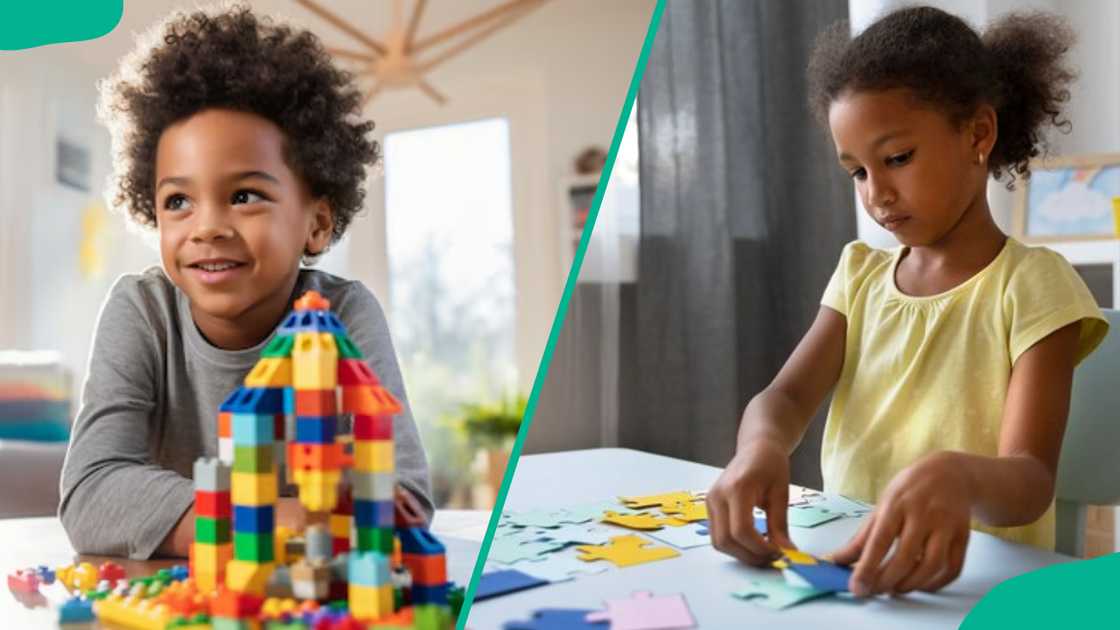
Source: UGC
f. Project-Based Learning method
Project-Based Learning (PBL) is an educational method where students investigate and respond to complex, real-world problems over an extended period, developing knowledge and skills through inquiry and collaboration.
Its benefits include increased student engagement, better understanding of content, and enhanced development of critical thinking, creativity, and collaboration skills.
However, challenges can include the difficulty of designing appropriate projects, increased teacher workload, potential for student mismanagement of freedom, and the need for effective assessment strategies.
How to implement project-based learning
To implement Project-Based Learning (PBL):
- Start by identifying a product that can solve a real-world problem.
- Create a project plan with students on how to solve the problem, including having a timeline and clear assessment rubrics.
- Facilitate the project by scaffolding student learning, encouraging collaboration and critical thinking, and providing regular, constructive feedback.
- Finally, assess student learning with both the final product and the process, and encourage reflection to help students and teachers evaluate the experience.
g. Problem-based learning method
Problem-based learning is not the same as Problem-Based Learning, though they are closely related and share many similarities; Problem-Based Learning starts with an open-ended problem to be solved, while Problem-Based Learning starts with a product or artifact to be created, with the problem arising during the project.
Both are student-centered, active learning methods where teachers act as facilitators, and students engage in collaboration, critical thinking, and the application of knowledge to complex, real-world challenges.
How to implement problem-based learning
To implement problem-based learning:
- Select a real-world problem that has multiple possible solutions, encouraging deeper learning and critical thinking.
- Divide students into small, cooperative groups to encourage collaboration.
- Set clear expectations for teamwork and discussion to ensure effective collaboration.
- Offer learning tools, technology, and access to real-world information to aid their research.
- Have groups create a product, such as a presentation, report, or infographic, to demonstrate their understanding and solutions.
- Allow teams to present their solutions to the class, fostering confidence and communication skills.
- Guide students to reflect on what they learned and the effectiveness of their problem-solving approach.

Read also
"You can apply with NECO Or WAEC": Flight attendant lists requirements for the lucrative aviation job
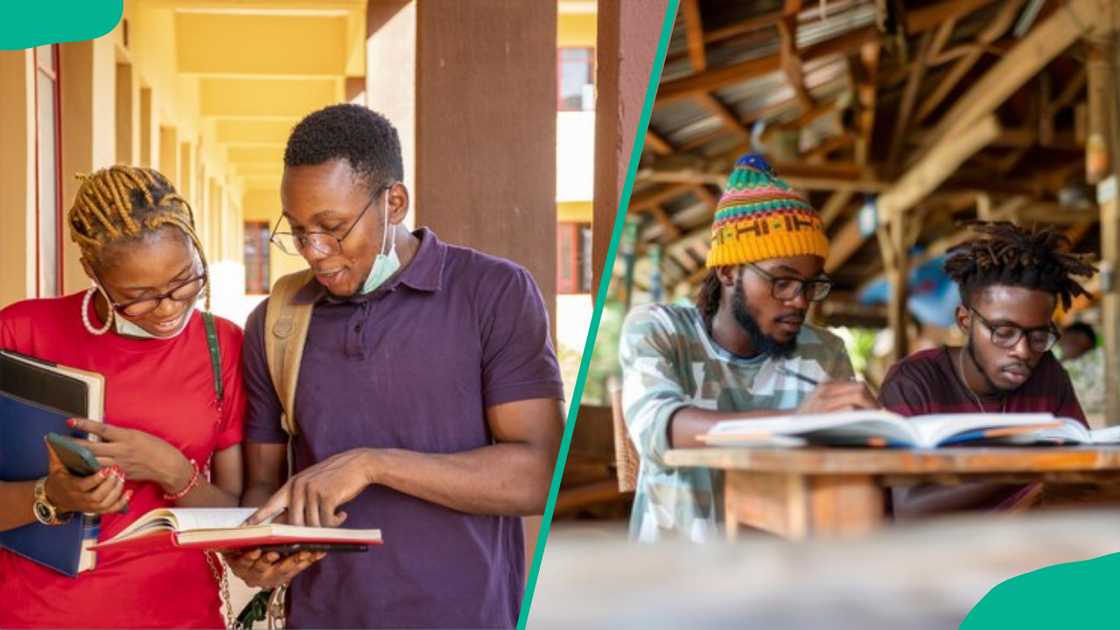
Source: UGC
h. Group or cooperative learning method
Cooperative learning is a structured teaching method where small groups of students work together to achieve a common goal, promoting interdependence and individual accountability within a supportive environment.
Its pros include improved academic performance, enhanced social and collaborative skills, better communication, and increased motivation.
How to implement the group or cooperative learning method
Implementing group or cooperative learning in a classroom involves these steps:
- Decide on group size and composition (e.g., heterogeneous groups for diverse perspectives).
- Clearly identify what students are expected to learn and achieve through the group activity.
- Prepare materials and resources, and ensure the necessities are readily available for each group.
- Circulate among groups to observe progress, identify areas of difficulty, and provide support when needed.
- Offer assistance and clarification as groups work through the task, but avoid directly solving problems for them.
- Bring the group activity to a close, allowing groups to share their findings or products with the class.
- Assess student learning and understanding through various methods (e.g., presentations, rubrics, individual assessments).
- Encourage students to reflect on their group work experience, including what went well, challenges faced, and lessons learned about collaboration.
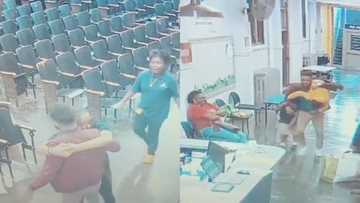
Read also
"Pay them more": Heartwarming moment young pupils were hugging their teacher goes viral on Instagram
i. Montessori learning method
The Montessori method is a child-centered approach emphasizing hands-on, self-paced, individualized learning within a structured, mixed-age environment. Its pros include fostering independence, self-discipline, social skills, creativity, and a love for learning through exploration and specialized materials.
Montessori learning materials and activities include:
- Hands-on learning: Utilize specially designed Montessori materials that are self-correcting and allow children to explore concepts concretely.
- Practical life activities: Integrate activities that mimic daily tasks, such as pouring, sweeping, or preparing snacks, to develop fine motor skills, concentration, and independence.
- Sensory exploration: Offer materials that engage multiple senses, aiding in the understanding of abstract concepts.
How to implement the Montessori learning method
Implementing the Montessori learning method in a classroom involves these steps:
- Provide furniture that is appropriately sized for the children, allowing them easy access and independence.
- Arrange learning materials on accessible shelves in a clear, organized manner, often grouped by subject or skill.
- Incorporate real objects and tools for practical life activities, promoting a sense of purpose and competence.
- Create a calm, uncluttered, and inviting space that encourages focus and concentration.
Advantages of learner-centered teaching methods
Student-based teaching methods have the following benefits:
- It engages students in education even more and makes them more disciplined in the classroom.
- Students learn essential communicative and collaborative skills through group work.
- Students are more interested in learning activities when they can interact with one another and participate actively.
- Students learn to control their learning, ask questions, and complete tasks independently.
- Creating a culture of reflection, critique, and revision pushes students to better performances.
Disadvantages of student-centered teaching methods
Learner-centered teaching methods have the following shortcomings:
- Differentiated teaching requires a lot of research because you must know the learning needs of each student.
- Some schools lack practical and professional development resources for most student-based learning methods.
- Classrooms may often be noisy or chaotic because students should be allowed to talk more often.
- Teachers may be overwhelmed when trying to manage all students' activities at once, and it can be difficult if students are in different stages of the same project.
- Since the teacher may not instruct all students simultaneously, some may miss essential facts.
- Since some students prefer to work alone, group work can become problematic.
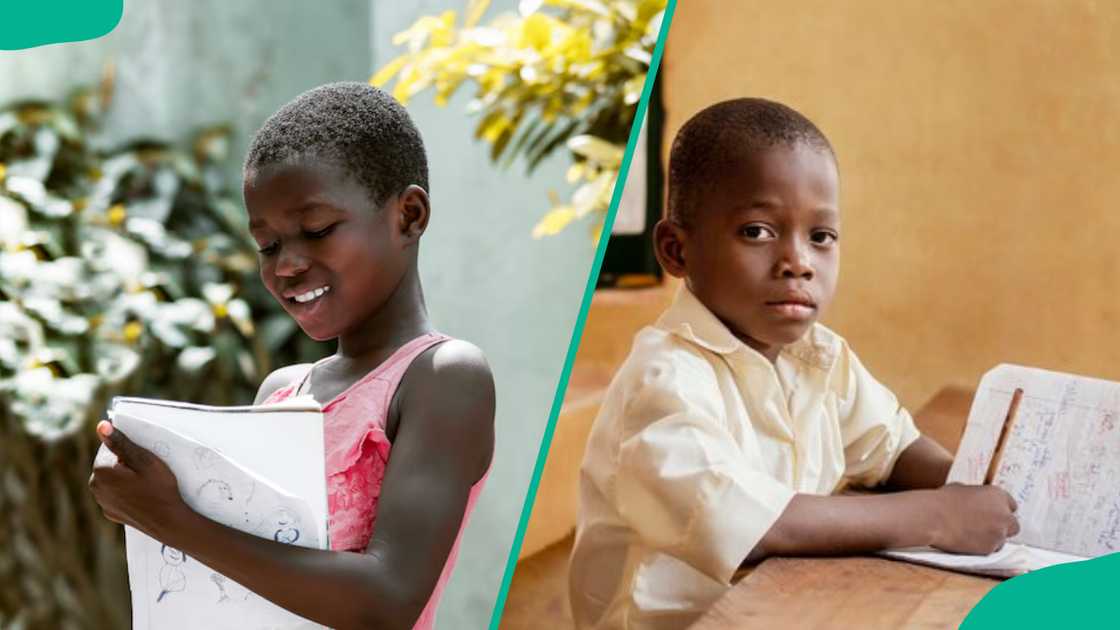
Source: UGC
3. High-tech learning method
This teaching methodology utilizes different technologies. Many educators use the internet, computers, and tablets in the classroom. Others may use the internet to assign homework.
To implement high-tech learning in class:
- Determine specific learning objectives and how technology can enhance them.
- Select tools that align with your lesson objectives and enhance the learning experience without requiring extensive learning time.
- Integrate curriculum with a learning management system (LMS) for assignments, resources, and communication.
- Familiarize yourself with the tools and practice activities multiple times to ensure smooth execution.
- Have a contingency plan in case technology fails to avoid losing class time.
- Use technology to deliver content (videos, podcasts) outside of class, freeing up class time for problem-solving and discussion.
- Utilize interactive whiteboards, educational apps, and learning platforms like Nearpod or Kahoot! for active student participation.
- Foster teamwork using tools like Google Docs, Microsoft Teams, or Padlet for real-time project collaboration and feedback.
- Employ adaptive learning software and platforms like Khan Academy or Duolingo that tailor content to individual student needs and paces.
- Immerse students in learning through virtual field trips or simulations using tools like Google Expeditions or VR headsets.
- Set up learning stations with various digital resources, such as videos, podcasts, and interactive games, allowing students to engage with content in different ways.
Advantages of the high-tech learning method
Teachers are embracing new technological tools because of their benefits. Below are the advantages of using a high-tech learning method:
- Learning can happen anywhere and anytime when students and teachers use the internet, computers, and tablets.
- Students and teachers can access a wide range of online learning resources.
- Online classes improve collaboration skills among the students and between the teacher and learners. For instance, they can make presentations on video calls.
- High-tech learning promotes competency in education as the world embraces digital learning methods.
- It promotes active or hands-on learning because tech learning tools are fun. They also allow students to create their own learning materials.
- It promotes blended learning (traditional plus high-tech learning). Teachers are present to guide students as they interact with tech learning tools.
Disadvantages of the high-tech learning method
From apps and e-textbooks to organizational platforms and “gamification,” there’s no shortage of classroom tech tools. However, all these have some shortcomings. Below are the main disadvantages of using a high-tech learning method:
- Technology (computers and the internet) can be a distraction for both teachers and students.
- It reduces direct social interaction since students can research online individually.
- The students and teachers require training to use tech learning tools and materials.
- Technical errors like slow internet can disrupt lessons.
- It can promote faster but less memorable learning.
- It is expensive for most parents and schools in developing countries.
- It can encourage cheating in exams if students do assessments and research online.
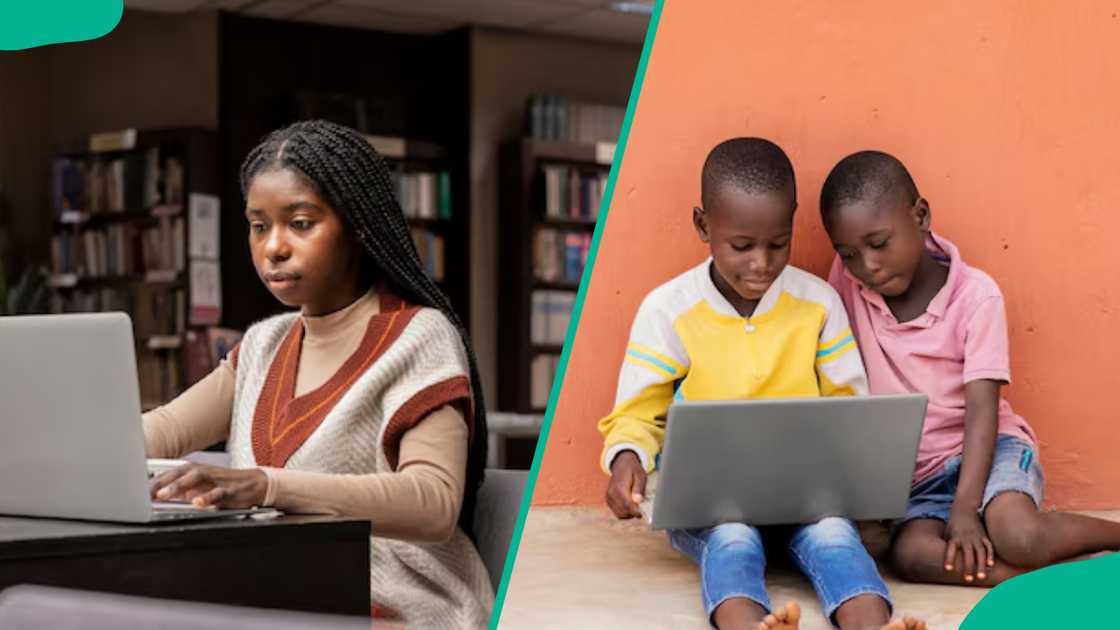
Source: UGC
4. Low-tech learning method
Low-tech learning is the traditional face-to-face teaching technique that encourages teachers and students to interact frequently in person.
To implement low-tech learning methods in the classroom:
- Provide physical objects for students to manipulate, allowing them to explore concepts in a tactile way.
- Engage students in creative activities like drawing, role-playing, and building models to deepen their understanding.
- Design activities that involve movement and physical engagement, as this can enhance learning for many students.
- Pair students to teach each other concepts, fostering teamwork and communication.
- Allow students to explain concepts to their classmates, reinforcing their own understanding.
- In a low-tech environment, sitting in a circle for discussions or drilling key concepts can keep everyone engaged.
- Use students' local environment and daily lives as a resource for learning.
- Link academic subjects to non-academic activities like cooking, playing games, or exploring their neighborhood to make learning more relevant.
- Provide physical copies of articles and assignments when internet access is unreliable.
- Instead of digital messages, use sticky notes to create "email threads" or messages for students to respond to.
- Offer a mix of offline and online activities to accommodate varying levels of technology access.
- Involve students directly in co-creating stories or analyzing texts to foster creativity and collaboration.
- Give students ownership over their learning through projects that allow for hands-on exploration and a deep dive into topics.
- Use low-tech tools like handwritten journals or diagrams for students to show their learning and for you to gauge understanding.
Advantages of the low-tech learning method
In most cases, low-tech learning requires minimal or no interaction with the internet and computers. Below are some advantages of low-tech learning:
- It improves a student's writing and spelling skills.
- Face-to-face learning keeps students and teachers focused on what is important.
- It encourages students to dig deeper into the topic outside the school or classroom.
- It improves the relationship between teachers and their students and the relationship among the learners.
- It is cheap for most schools and parents in developing countries.
Disadvantages of the low-tech learning method
- Students may not develop strong digital literacy skills like those using modern tech learning tools.
- Unlike those using modern tech learning tools, students using low-tech learning techniques might have limited access to educational resources.
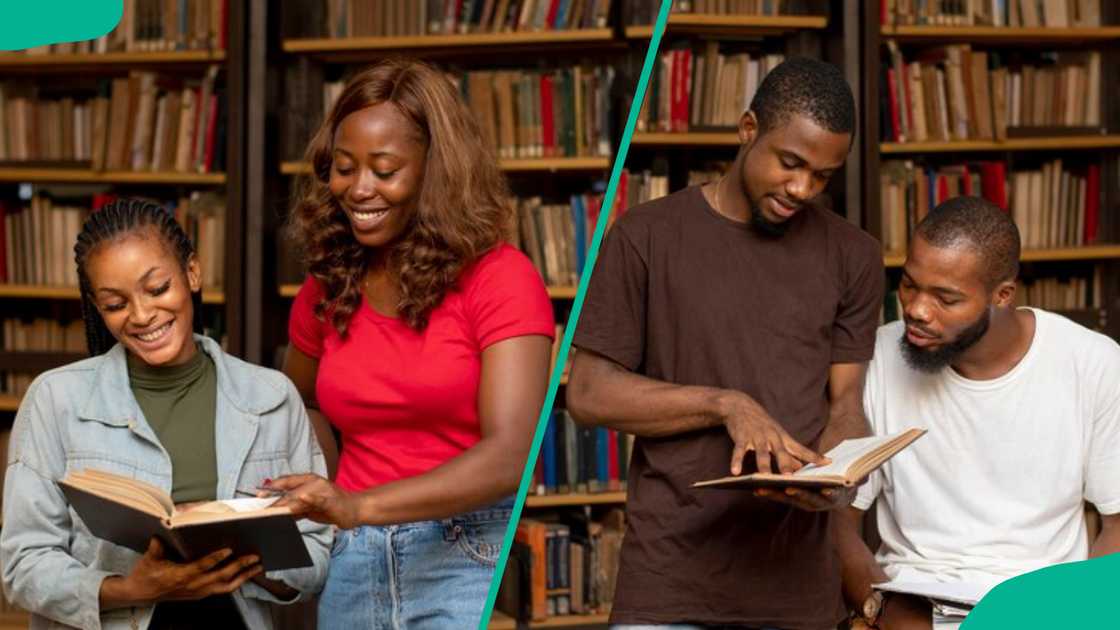
Source: UGC
5. Case study learning method
The case study learning method is primarily student-centered, but it is also a teacher-facilitated strategy. Students actively engage with real-world scenarios to develop critical thinking and problem-solving skills, while the teacher acts as a guide, facilitating discussion and providing structure rather than directly transferring knowledge.
Its pros include fostering decision-making, collaboration, and the ability to navigate complexity, while its cons involve cases becoming outdated, potential for endless analysis, and relying heavily on peer quality for discussions.
Here is how to implement the case study learning method:
- Implementing the case study learning method in a classroom setting involves these key steps:
- Choose a case study that aligns with course objectives and presents a real-world problem or scenario.
- Develop or select the case narrative, including relevant data, background information, and any necessary readings.
- Create open-ended questions to stimulate critical thinking and discussion, guiding students to analyze the case, identify key problems, and propose solutions.
- Present the case to students, providing an overview of the situation and its relevance to the course material.
- Clearly outline how students should approach the case, including preparation requirements (e.g., individual analysis, group work) and expected outcomes (e.g., presentation, written report).
- Divide students into small groups (e.g., 3-6 students) to facilitate collaborative analysis and discussion.
- Have each group present their analysis and proposed solutions to the class.
- Lead a whole-class discussion to compare and contrast different approaches, explore the implications of various solutions, and connect the case back to broader course concepts.
- Summarize key takeaways from the case study and ensure that learning objectives have been met.
- Design assessment methods that align with the learning objectives of the case study.
Advantages of the case study learning method
- Students can directly apply theoretical knowledge to practical, complex scenarios, making the learning process more relevant and engaging.
- The method encourages deep analysis of situations, helping students identify problems, assess different perspectives, and develop more robust solutions.
- Case studies foster long-lasting "meta-skills" such as critical analysis, judgment, decision-making, and the ability to learn more quickly.
- Learners gain a more comprehensive grasp of concepts when they are set within the context of real-life problems, rather than abstract theory.
- Cases create a natural focus for discussion, allowing students to articulate their thoughts, challenge assumptions, and contribute to a shared learning experience.
Disadvantages of the case study learning method
- Conclusions drawn from a single case may not apply to larger populations or different contexts, making the findings less universally relevant.
- Case studies often focus on unique situations, making them difficult to replicate and verify by other researchers.
- Case studies may not be considered scientifically rigorous because they can lack controlled variables and have a focus on subjective interpretation.
- The complex and often uncontrolled nature of real-life cases makes it challenging to isolate specific factors and determine clear cause-and-effect relationships.
- Analyzing complex case studies requires significant time and effort from both instructors and participants, potentially limiting coverage of other topics.
- The process of collecting and analyzing data for case studies can be labor-intensive, requiring substantial time and effort.
- Researcher bias is a risk, as personal viewpoints can influence data collection and analysis, potentially leading to skewed findings.
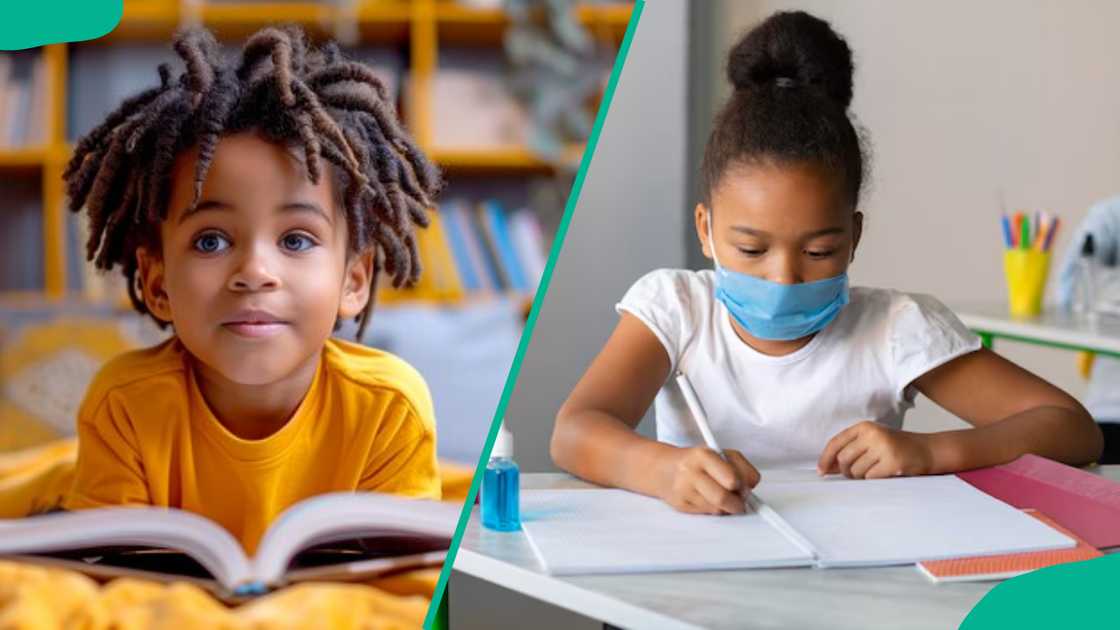
Source: UGC
What is the definition of a teaching method?
The term "teaching method" refers to the general principles and strategies teachers use to instruct a classroom. The combination of different methods of teaching in education is something every teacher should practice.
What are the three types of teaching methods, their advantages and disadvantages?
Three primary categories of teaching methods are teacher-centered, learner-centered, and technology-based. Below are their pros and cons.
Teacher-centered methods
The instructor is the primary source of information, delivering lectures and direct instruction to students.
Advantages:
- Structured learning: Provides a clear and organized learning environment for students.
- Efficient content delivery: Concepts can be covered comprehensively in a shorter time.
- Discipline: Helps establish a disciplined classroom atmosphere.
Disadvantages:
- Limited student engagement: Minimal interaction can lead to reduced student participation and engagement.
- Passive learning: Students may become passive recipients rather than active participants in their learning.
- Ignores individual needs: This method may not cater to diverse individual learning styles and abilities.
Learner-centered methods
These methods emphasize student autonomy, promoting active participation, problem-solving, and collaboration. Examples are group learning, inquiry-based learning, and Project-Based Learning.
Advantages:
- Active learning: Encourages students to take an active role in discovering knowledge.
- Skill development: Fosters critical thinking, problem-solving, and decision-making skills.
- Increased engagement: Students are more invested when they are actively involved in the learning process.
Disadvantages:
- Pacing challenges: Requires careful planning to ensure all students stay on track and meet learning objectives.
- Potential for inefficiency: The process of discovery can sometimes be slower than direct instruction.
- Reliance on facilitation: Teachers need strong facilitation skills to guide and support student-led learning effectively.
Technology-based learning
It incorporates technological tools like computers, tablets, and online platforms to deliver and enhance educational content. Examples are online courses, educational software, and virtual reality experiences.
Advantages:
- Flexibility: Offers flexible learning schedules and access to a vast range of resources.
- Personalized learning: Allows for personalized learning paths and adaptive content for students.
- Accessibility: Can break down barriers to education by providing access to learning anywhere.
Disadvantages:
- Digital divide: Not all students have equal access to the necessary technology or internet connectivity.
- Distraction: Students can be easily distracted by the many features and non-educational content on devices.
- Over-reliance: A heavy reliance on technology might reduce opportunities for essential face-to-face interactions and hands-on experiences.
What are the 4 methods of teaching?
There are four broad categories:
- Teacher-centered approaches: In this approach, the teacher is the primary source of information and directs the learning process.
- Learner-centered approaches: The student takes a more active role, with the focus on their needs, interests, and participation.
- Content-focused methods: The emphasis is on the subject matter itself and ensuring students master the content.
- Interactive/participative methods: These methods encourage active student involvement and engagement in the learning process.
What are the 5 methods of teaching?
There are many different teaching methods, but five common and effective approaches are:
- Lecture: A traditional, teacher-centered method where the instructor delivers information to the students through a presentation.
- Discussion: An interactive method where the teacher and students engage in a dialogue to explore a topic, share ideas, and clarify concepts.
- Demonstration: A visual approach where the teacher shows students how to perform a skill, use a tool, or complete a task, often accompanied by explanations.
- Project-Based Learning (PBL): A hands-on method where students work on a complex project over an extended period to solve a problem or answer a question, gaining knowledge through the process.
- Inquiry-Based Learning: A student-centered approach where students are encouraged to explore questions, investigate topics, and discover information for themselves, promoting critical thinking and self-directed learning.
What are the 10 methods of teaching?
All teacher and student-centered learning approaches have their pros and cons. Therefore, neither is superior to the other. The best thing to do is to combine various teaching methods to help your students understand the concepts more deeply. Some effective teaching methods are:
- Lecture-based learning.
- Differentiated instruction.
- Kinesthetic learning.
- Technology-based learning.
- Individual learning.
- Group learning.
- Inquiry-based learning.
- Game-based learning.
- Expeditionary learning
- Flipped classrooms.
What are the 15 methods of teaching with examples?
Here are 15 teaching methods, with explanations and examples:
- Lecture: A teacher-led presentation of information. Example: A history teacher delivering a lecture on the French Revolution, using a slideshow.
- Demonstration: A teacher shows a skill or process. Example: A science teacher demonstrating how to conduct a chemical reaction.
- Class Discussion: A teacher-moderated exchange of ideas. Example: A literature class discussing themes in a novel, with students sharing interpretations.
- Inquiry-Based Learning: Students explore questions to find answers. Example: Students researching the water cycle to understand local weather patterns.
- Project-Based Learning (PBL): Students create projects to learn a concept. Example: Students designing a community garden to learn about botany and sustainability.
- Collaborative Learning: Students work together in groups. Example: A group of students working on a math problem, each contributing to the solution.
- Flipped Classroom: Students learn new concepts at home and practice in class. Example: Students watch video lectures on photosynthesis before class, then work on photosynthesis experiments in the classroom.
- Game-Based Learning: Learning through educational games. Example: A history quiz game to learn about ancient civilizations.
- Personalized Learning: Tailoring education to individual student needs. Example: A student using an adaptive learning platform that adjusts difficulty based on their progress.
- Differentiated Instruction: Modifying content, instruction, or assessment for diverse learners. Example: Providing some students with graphic organizers and others with written summaries to learn a new concept.
- Experiential Learning: Learning by doing or through direct experience. Example: Taking students to a farm to learn about agriculture.
- Role-Playing: Students act out scenarios to understand different perspectives. Example: Students role-playing as historical figures during a conflict to understand the different viewpoints.
- Case Studies: Analyzing real-world situations to learn. Example: Business students analyzing a company's marketing strategy to learn about product promotion.
- Peer Teaching: Students teach each other. Example: An advanced math student explaining a difficult concept to a struggling classmate.
- Mentoring: An experienced person guides a less experienced one. Example: A senior student mentoring a freshman on how to navigate university life.
What is blended learning?
A blended teaching methodology combines traditional face-to-face learning techniques with online and mobile technologies. It allows educators to link online and in-class activities. However, students with different needs and digital literacies may not access technology-based learning without enough support and training.
What is a universal design for learning?
Universal Design for Learning (UDL) is an approach that believes in giving all students equal opportunities to succeed. It accommodates the needs and abilities of all learners and eliminates unnecessary challenges in the learning process.
For instance, classrooms that follow UDL allow students to work on different projects within the same topic.
What are the new methods of teaching?
Blended and high-tech learning techniques are the latest methods of teaching in education. Teachers and students use virtual reality technology and AI in a classroom setup. They usually implement VAK teaching (Visual, Auditory, and Kinesthetic) and gamification (game design elements).

Read also
FUTMINNA eportal: An electronic online platform of the Federal University of Technology, Minna
What are the general methods of teaching?
The lecture method is the oldest teaching method. In addition, most schools worldwide are also embracing group and project-based teaching methods.
What determines the methods of teaching in education?
There are various methods of teaching in education. The following factors can influence the technique a teacher chooses:
- The educator's teaching objectives.
- The mastery of content and the teacher's experience.
- The nature of the subject matter.
- Learning tools and materials that the teacher and learners can access.
- The learning environment in which the teacher and learners are.
- The age of the learners and other demographics of your classroom.
Where can you get the advantages and disadvantages of teaching methods in PDFs?
You can download teaching methods' advantages and disadvantages PDFs from educational institutions and repositories, such as the eGyanKosh platform and ResearchGate.
Alternatively, you can explore various types of teaching methods, including their advantages and disadvantages, in a slide format on platforms like Slidereserve.
As a teacher, the most crucial thing to decide is the types of teaching methods you will use in your classroom. To do this, you first have to understand your students' needs and find out which methods will be most suitable.
Legit.ng explained how to write an application letter when applying for a teaching job. Your letter should efficiently present your skills to potential employers. If you want to teach in a primary school, this is for you.
What is there to know about writing an appealing letter and presenting yourself in the best way? Check the article out to learn more about it.
Source: Legit.ng

Regina Stets (Lifestyle writer) Regina has been working as a reporter since 2017. She has written numerous publications on various topics, including celebrities, lifestyle, news, and many more. In addition to writing, she is also an English teacher, translator and a volunteer. Her interests are art, psychology and travelling, and she believes in equal rights for everyone. reginastets@gmail.com

Peris Walubengo (Lifestyle writer) Peris Walubengo has vast experience in search engine optimization through digital content generation, research, editing, and proofreading. She joined Legit.ng in April 2022 and completed the AFP course on Digital Investigation Techniques. You can email her at perisrodah254@gmail.com.


